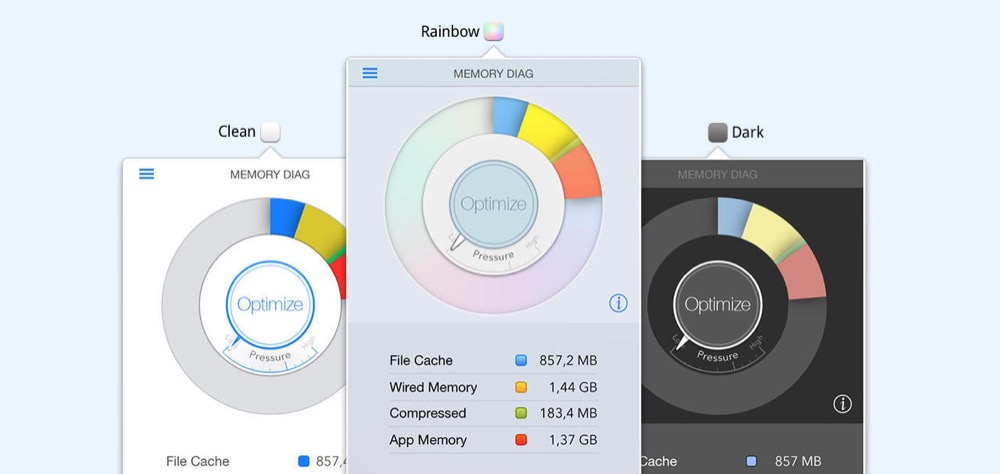Run Memory Diagnostics utility on a bootable PC. This is the ideal method when your PC is. The Memory Diagnostics tool in Windows 10 offers three types of tests: Basic, Standard, Extended. By default, the utility runs standard test which is sufficient in most cases to detect memory problems. The “Basic” test does MATS+, INVC, and SCHCKR.
Memory Diagnostic Tool
- Windows Memory Diagnostic tool. Running Memory diagnoses would be a good thing to do as the first step of your troubleshooting process. It can help you to detect the memory problem of your PC. The windows memory diagnostic tool runs a comprehensive test and displays the test results so you can take immediate action. Here follow steps below to.
- Subscribe to the RSS feed Originally Added to Website: 14 Sep 2009 Last updated: 13 Aug 2014 Added off-site link to Furmark due to bloatware concerns Top of the list Memory diag (bootable) Hard Drive diag (bootable) AntiMalware tests Rescue disks (bootable) Video 1 (Furmark).
A memory diagnostic is a test which is run to confirm that computer memory is in good condition. The random access memory (RAM) computers are fitted with can be fragile, and it is a good idea to check it regularly and to check new RAM when it is installed. If the memory is damaged, it needs to be replaced to prevent problems with the computer. People can run diagnostics at home, or ask a technician to run a diagnostic for them if they do not feel comfortable doing it on their own.
Many operating systems come with a built in memory diagnostic utility, and standalone versions are available as well, including versions which can be used to evaluate a computer's RAM when no operating system is present. In all cases, the diagnostic can take varying amounts of time to run, going through a series of tests and then indicating whether or not the memory passed. If the result is a failure, the memory should be removed and replaced before proceeding with any other activities.
Memory Diagram Java
When people start encountering stop errors, sluggish software, operating system problems, and other erratic behaviors on their computers, it can be a sign that something has gone wrong with the memory. Sometimes, the computer may even display a specific error message indicating that the RAM is faulty and it needs to be inspected and possibly replaced. In all of these cases, a memory diagnostic can be used to learn more about the situation, and, if nothing else, it will rule out bad memory as the culprit for the problems.

What Is Windows Memory Diagnostic
Running a diagnostic when a computer has an operating system usually requires that the computer be restarted to run the system memory test. The computer will display a screen indicating that the test is running, and then will restart again to provide the results. Other diagnostic utilities can also be run to identify signs of problems, such as viral infection, damage to the hard drive, and so forth.
If the memory fails the test, it means that it is damaged and potentially unstable. While it may be possible to use the computer, people run the risk of losing data or experiencing other problems, which makes it advisable to replace the memory. When the memory is replaced, another memory diagnostic should be performed to confirm that the new memory is in good condition. If it is faulty, it should be returned; most retailers know that sometimes there are problems out of the box, and they will provide a replacement product with a minimum of fuss when people explain that the RAM failed a memory diagnostic.
OneNote is a digital notebook. You can use it to capture, organize, and share information, notes, and ideas. You can add sections and pages just like you would with a regular notebook. With OneNote, you can add themes, use color coding, insert pictures, and draw annotations other objects. OneNote is available as a desktop, mobile, and web application. OneNote 2013 For Dummies Cheat Sheet OneNote 2013’s a powerful super-app that allows you to take notes and consolidate other Office 2013 content, and now you can even access your notes on all major smartphones and tablets whether or not they run a version of Windows. Check out this Cheat Sheet for helpful tips and reminders. OneNote Quick Reference Guide The OneNote Program Screen Open an Existing Notebook: Click the File tab, click Open, select a save location, and click the notebook. Create a New Notebook: Click the File tab, click New, and select a save location. Type a name in the Notebook Name field and click Create. Close a Notebook: Click the File tab, click the. Onenote for dummies free pdf. OneNote 2013 for Dummies Learning something new can make you feel less smart than usual. The OneNote 2013 for Dummies has a long list of topics that give you your confidence back. Some of them are called “How to Password-Protect Sections in OneNote 2013” and “How to Insert Data from Office Apps in OneNote 2013.”.
